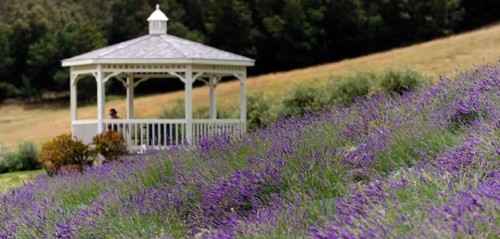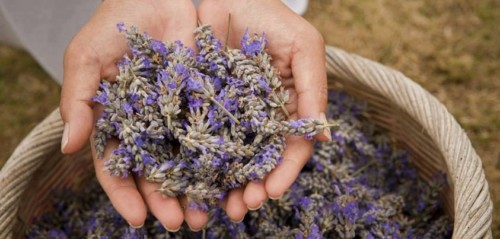Visiting a Lavender Farm in Maui
It’s hard to believe that the Ali`i Kula Lavender Farm grew from a single lavender plant to a 13.5-acre property with 45 varieties of lavender and 55,000 plants. But that’s the surprising story behind this magical place located in Kula, Hawaii– a quaint, rustic area on the slopes of Haleakala, a dormant volcano and the island’s highest peak.
Though lavender isn’t even native to Maui (it originated in the Mediterranean), that first plant—a housewarming gift to the farm’s founder, Alii Chang—positively thrived after Chang planted it on the property he’d bought as a retirement project.
That part of the story probably shouldn’t be that surprising, as Chang was an avid and successful farmer—before retiring, he owned a 50-acre tropical flower farm that exported flowers from Hawaii all over the world. But lavender is hardly a plant you associate with exotic Hawaii, where hibiscus and frangipani reign, and Chang didn’t know much, if anything really, about it.
As luck would have it, lavender is a plant that thrives on neglect, so Kula, which is in a sunny area of the island that gets only about 25 inches of rainfall annually, turned out to be an ideal location for the herb to flourish without much attention.
In Chang’s mind, the plant chose him, and within a year, he chose it right back in spades, buying and planting 1,000 lavender plants on his original three acres. In 2002, the Ali`i Kula Lavender Farm (sometimes abbreviated as “AKL”) opened to the public.
Lavender may be the main botanical attraction at AKL (you don’t even have to get out of your car to see row after row of lavender mounds growing up a wide slope), but it’s hardly the only one. The sprawling farm is also home to an amazing array of flowers, including hydrangea, protea (an exotic flower native to South Africa and Australia), bird of paradise, orchids, and sunflowers. “We like to think of ourselves as a botanical garden,” says Danielle Ordonez, the farm’s customer service supervisor. (Coincidentally, the farm is down the road and around the corner from the actual Kula Botanical Garden.)
One hundred olive trees line the whole property, which also features avocado and citrus trees, tons of succulents, and a host of tall, columnar, and very dramatic-looking cypress and juniper cypress trees. It’s a horticultural marvel.
Then there’s the view—sweeping and spectacular. At 4,000 feet above sea level, you’re high enough to see the islands of Kaho’olawe, Moloka’i, and Lana’i. By itself, it’s worth the price of admission to the farm ($3 per person).
But be sure you tear yourself away from it and see the whole property. There’s something of beauty everywhere you look: Artifacts and antiques that Chang has collected over the years are on display throughout the fields and gardens, and seating (painted lavender, of course) is scattered throughout.
And with gurgling fountains and the intoxicating scent of lavender in the air, your other senses will be happily engaged as well. (One caution: The grounds aren’t level, so be sure you wear sturdy shoes to prevent falls!)
You can explore the farm on your own, but if you have time, take the walking tour (30 to 40 minutes; $12 per person, $10 if booked in advance). You’ll learn how to distinguish between various varieties of lavender—for instance, the leaves of French lavender have serrated edges like a French braid, while Spanish lavender has long, petal-like ears that grow out of the top and look like bunny ears.
All the varieties smell different, too—some are sweet, some are citrusy, while others are fruity, woody, or menthol-y. You’ll also get cuttings of lavender on the tour that you can press as a keepsake or sniff later if you have trouble sleeping (the herb is proven to help lull you to dreamland).
There’s no bad time to go to AKL—six varieties of lavender bloom year-round, so there’s always something purplish to see. This coincides well with the pervading advice of travel experts to visit Hawaii in the off-season (mid-April to mid-June or September to mid-December), when the weather is reliably good and airfare and accommodations are cheaper– though Ordonez says that lavender is really a summer bloomer that’s at its height in July and August. (Bonus: It also smells more potent then.)
Either way, AKL is a gorgeous off-the-beaten path destination in Maui that is worthy of any itinerary. For those visiting Hawaii this summer, it’s well worth a trip to the farm. While you’re there, be sure to say a silent “Mahalo” (Hawaiian for “Thank You”) to the friend who bought Alii Chang that first lavender plant.
AKL Maui is located at 1100 Waipoli Road in Kula, Hawaii. For more information, visit the farm’s website.






































